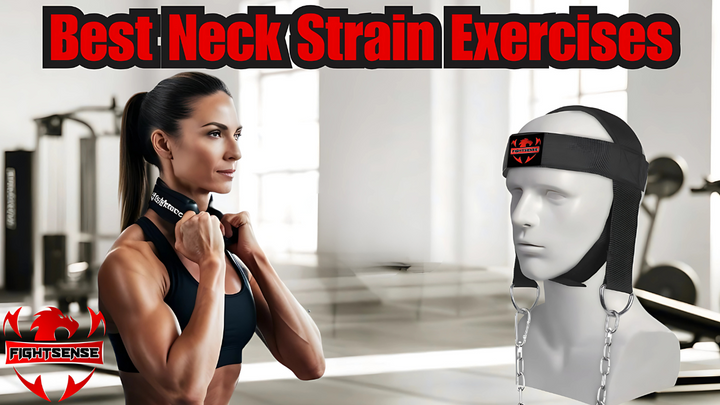Best Neck Strain Exercises for Pain-Free Performance
5th May 2025
Easing tension and preventing injuries from poor posture, too much stress, or overtraining depend critically on neck strain exercises. Even simple workouts might cause pain or difficulty moving if your neck muscles are stiff or weak.
Strengthening these muscles with controlled neck strain exercises can enhance overall neck health and performance. While working out all of your neck muscles at once, the Fightsense neck harness helps you maintain form stability. Training is therefore safer and more successful.
Keynotes
- A warm-up helps to increase flexibility and prevent soreness of the neck following an exercise.
- You will be less prone to strain your neck if you practice with correct technique and alignment.
- Safe, targeted resistance can be provided using the Fightsense neck harness.
- Should you have neck discomfort while exercising, stop now. relax and heal.
- Over time, regular neck strain exercises help to maintain your neck in good condition.
How to Avoid Neck Strain After Workout
Experiencing neck strain working out is frustrating and often results from improper warm-ups or poor posture during training. It might cause tension, soreness, and possibly lower your upper body strength. Always perform mobility exercises for your neck before pulling to prevent this.
You should then stretch and perform some modest resistance exercises to relieve neck tension. Safe, directional support provided by a Fightsense neck harness works out the muscles in your neck, increasing their neck strength against stress following an exercise.
Tips to Manage Neck Strain From Exercise
One of the most common issues gym-goers face is neck strain from exercise, especially during upper body routines like shrugs, presses, or planks. Maintaining a straight spine is quite crucial, hence avoid overdoing it.
If you follow particular exercises meant to increase muscular balance and mobility, neck strains are less common. The Fightsense neck harness helps you vary the tension to encourage healthy posture and help strengthen important areas. It's fantastic for those wishing to avoid long-term neck issues.
What to Do When Neck Strain Working Out Becomes Common
Your body is warning you something is wrong if working out causes constant neck pain. Usually this results from hurried training, poor form, or neglect of healing considerations. Including neck strain exercises in your regimen will help you increase mobility and endurance, thereby preventing long-term persistence of these issues.
Training with the Fightsense neck harness using progressive loading helps range of motion and strength. Long-term neck development and a reduced likelihood of injury follow from this.
Step-by-Step Neck Strain Exercises Routine
One should keep up a neck care routine. You can practice daily easy neck strain exercises like these:
- Neck Tilts (10 reps each side)
- Forward and Backward Flexion (10 reps)
- Neck Rotations (10 reps each direction)
- Isometric Holds with Resistance (3 sets, 10 seconds each)
Using the Fightsense neck harness in isometric or dynamic resistance motions is better and more efficient. Staying away from rapid motions, try to move gently and slowly. These exercises are perfect for anyone recovering from neck strain from exercise or trying to prevent neck strain working out.
Conclusion
Neck discomfort can make exercise difficult, uncomfortable, and cause doubt in oneself. Correct neck strain exercises can enable you to avoid injury, get stronger, and move more easily. Start working on regulated, targeted exercises if you wish to avoid neck strain after workout or if you currently experience it following a neck workout.
Use good support gear like the Fightsense neck harness for stability and progress. Smart neck exercise serves not only for improvement but also for maintaining strength and safety for lifetime.
Disclaimer
This information is designed to be informative; it should not be used in place of professional medical advice. Always see your doctor before beginning a new exercise program, particularly if you have past injuries or persistent discomfort.

